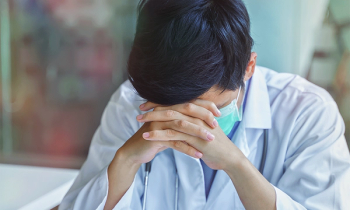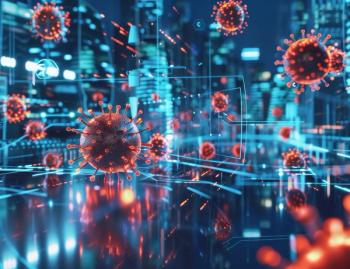
- ONCOLOGY Vol 9 No 7
- Volume 9
- Issue 7
Commentary (Bertino): New Antifolates in Clinical Development
The excellent review by Drs. Takimoto and Allegra summarizes the current status of the new antifolates in clinical development. Based on knowledge of why methotrexate is ineffective in the treatment of many tumors (ie, either intrinsic or acquired resistance), and on the identification of new targets for folate inhibitors (eg, thymidylate synthase [TS] and glycinamide ribonucleotide [GAR] transformylase), new antifolate development has recently received a great deal of attention from both industry and academic centers.
The excellent review by Drs. Takimoto and Allegra summarizes the current status of the new antifolates in clinical development. Based on knowledge of why methotrexate is ineffective in the treatment of many tumors (ie, either intrinsic or acquired resistance), and on the identification of new targets for folate inhibitors (eg, thymidylate synthase [TS] and glycinamide ribonucleotide [GAR] transformylase), new antifolate development has recently received a great deal of attention from both industry and academic centers.
Trimetrexate with leucovorin protection (not rescue) has been approved by the FDA for the treatment of Pneumocystis carinii infections. A phase I study using trimetrexate to biochemically modulate fluorouracil-leucovorin showed an encouraging response rate of 20% in patients with tumors previously treated with fluorouracil-leucovorin. Phase II studies with this combination are in progress in patients with untreated colorectal cancer.
Another potentially exciting use of trimetrexate with leucovorin protection is the treatment of human malignancies that have impaired ability to transport methotrexate or reduced folates. Thus, acute lymphoblastic leukemia cells propagated in severe combined immunodeficiency (SCID) mice, which are resistant to methotrexate as a result of decreased function of the reduced folate carrier transporter, were found to be sensitive to trimetrexate with leucovorin protection, using a schedule similar to that used to treat P carinii [1]. Clinical studies of this combination are planned in patients whose tumor cells demonstrate this phenotype.
Edatrexate, a "better methotrexate" (as discussed by Takimoto and Allegra), may have its greatest value when used in combination with paclitaxel (Taxol), cisplatin (Platinol), or alkylating agents, as shown in preclinical models. Early results in the clinic are encouraging [2].Also of interest is the effectiveness of this drug for the treatment of malignant fibrous histiocytoma, a sarcoma subtype [3].
Thymidylate Synthase Inhibitors
Perhaps the most exciting of the second-generation antifolates are the TS inhibitors. As in the case of dihydrofolate reductase inhibitors, TS-inhibiting compounds that are either ex- tensively polyglutamylated or that cannot be polyglutamylated are in clinical trials. Among the former, Tomudex has significant activity in colon cancer, and is now being tested in a phase III trial that is comparing its activity with that of fluorouracil-leucovorin. Tomudex and CPT-11 are the first new effective drugs found to treat colon cancer since the introduction of fluorouracil. The combination of Tomudex and fluorouracil has produced sequence-dependent synergy in colon cancer cell lines, [4] and plans are being formulated to test this combination in the clinic.
Finally, in addition to Tomudex, the Agouron compound AG-377 is now in phase II trials, and it will be of great interest to learn whether compounds like AG-377, which do not require polyglutamylation for activity, are active against tumors intrinsically resistant to methotrexate that have impaired polyglutamylate formation. In this regard, the Burroughs Wellcome compound 1843U89, a TS inhibitor also in phase I clinical trials, is converted only to the diglutamate and yet is retained by cells [5]. This compound has promising preclinical activity, even in methotrexate-resistant cell lines [6].
The next 5 years should be exciting ones, as the spectrum of activity of these compounds, as well as their use in combination and in new treatment approaches are investigated.
References:
1. Lacerda JF, Göker E, Kheradpour A, et al: Selective treatment of SCID mice bearing methotrexate-transport resistant human acute lymphoblastic leukemia tumors with trimetrexate and leucovorin "protection." Blood, May 1995.
2. Fennelly D, Gilewski T, Hudis C, et al: Phase I trial of sequential edatrexate followed by paclitaxel: A design based on in vitro synergy in patients with advanced breast cancer. Proc AACR 36:247, 1995.
3. Casper ES, Christman KL, Schwartz GK, et al: Edatrexate in patients with soft tissue sarcoma. Activity in malignant fibrous histiocytoma. Cancer 72:766-770, 1993.
4. Izzo J, Zielinski Z, Chang YM, et al: Molecular mechanisms of the synergistic sequential administration of ZD1694 (Tomudex) followed by FUra in colon carcinoma cells. Proc AACR 36:381, 1995.
5. Duch DS, Banks S, Dev IK, et al: Biochemical and cellular pharmacology of 1843U89, a novel benzoquinazoline inhibitor of thymidylate synthase. Cancer Res 53:810-818, 1993.
6. Li WW, Tong WP, Bertino JR: Antitumor activity of antifolate inhibitors of thymidylate and purine synthesis in human soft tissue sarcoma cell lines with intrinsic resistance to methotrexate. Clinical Cancer Research, June 1995.
Articles in this issue
over 30 years ago
How One Company Decides When to Pay for Experimental Therapiesover 30 years ago
Smoking Cessation Guidelines Should Include Smokeless Tobaccoover 30 years ago
Radiolabeled-M195 Shows Promise in Myeloid Leukemiasover 30 years ago
Psychological Distress Can Be Predicted Early in Cancer Patientsover 30 years ago
New Test May Predict Course of AIDSover 30 years ago
Book Review: Surviving Childhood Cancer--A Guide for FamiliesNewsletter
Stay up to date on recent advances in the multidisciplinary approach to cancer.


















































































